|
Crosley Cincinnati Plants Photo Page
Crosley Richmond, IN Plant Photo
Page Crosley
Motors Marion, IN Plant Photo Page
Crosley
Corporation in World War Two
Cincinnati, OH
1921-1956
Auto Production in Richmond, IN
1939-1942
Auto Production in Marion, IN as Crosley Motors
1946-1953
Rest in Peace
This page last updated
8-11-2020. The Crosley
Corporation was headquartered in Cincinnati, OH. Its founder, Powel
Crosley Jr., was an American inventor, industrialist, entrepreneur,
and pioneer in radio broadcasting. In 1920, Crosley's first radio was a
crystal radio named "HARKO". It was a roaring success and made radio
available to the masses. This life changing innovation earned Powel
Crosley, Jr. the reputation as "The Henry Ford of Radio." By 1923,
Crosley radio station (WLW) reached 500,000 watts, the most powerful
station in the world. By 1930, Crosley designed its own airplane called
the "Moonbeam" and was the first to broadcast radio from a plane.
Crosley manufactured radios, refrigerators, and as somewhat of a
sideline, automobiles before the Second World War. During the Second
World War, Crosley was the largest employer in Cincinnati with 10,000
employees. Powel, Jr. and Lewis Crosley sold their company to AVCO
on August 8, 1945. This included all the products except for
vehicles. AVCO would market the Crosley name until 1956.
Both Powel, Jr. and Lewis would build Crosley cars and trucks in Marion,
IN from 1946 until 1953 when they sold the Marion plant and remaining
car parts to General Tire Company.
The Crosley Corporation is a story of two brothers, Powell Crosley, Jr.
and his younger brother Lewis Crosley. Each were
successful in their lives before Lewis joined Powell's company in 1919,
after returning home from serving in Europe during World War One.
They were almost complete opposites. Powel, Jr. was the idea
person. He lived the high-life of the era with a mansion, several
vacation homes, yachts, and private aircraft. Lewis and his family
lived in a modest house, wore the same suit each day, and was always
home at 5PMfor dinner with the family. Powel, Jr. was foremost in
sensing new business opportunities, but it was his brother Lewis that
ran the factories that turned the opportunities into a marketable
product. Their synergy made the Crosley Corporation more than the
sum of their two individual efforts.

The Crosley Corporation did not win
the Army-Navy "E" Award during World War Two.
Normally, I do not make a
statement of this sort. If a company did not win the "E" award, I
do not bring up the subject. However, in the case of Crosley, it
did not win the "E" award because it was producing the Navy's very top
secret VT (Variable Timing) proximity fuze. This project was more
secret than the Manhattan Project, so much so that most persons still do not
know about it. There is no known evidence that the Russians were
aware of proximity fuze. Russia was well aware of the Manhattan
Project through its network of spies. The project was so secret
that the manufacturing of the components and final assembly of the
product was done in highly secured areas. Even the owners of the
Crosley company were not allowed in the area where proximity fuzes were
being assembled. The workers in any of the plants making parts and
doing final assembly were not told what they were making. For this
reason, the Navy could not award Crosley an "E" award, as it would have
had to reveal what was being made in the plant. Therefore, all of
the hard work to produce the original proximity fuzes and then make
5,205,913 of the finished units went totally unrecognized. This
was 23.6 percent of the 22,073,481 proximity fuzes built.
The VT proximity fuze program was one
of three top secret programs the United States had during World War
Two. It was the only one that remained secret during the war
and was never discovered by the enemy in action or through spies.
The Manhattan Project was penetrated by spies. The American
radar program was only secret in that it had the magnetron tube.
The Germans and other combatants had radar. The VT
program was so secret that VT fuzes were taken to the Lunken Airport
in unmarked trucks to be flown to their final destination. The
aircraft flew directly to military bases were the fuzes were then
attached to shells. If the fuzes were shipped by train in a
boxcar, a U.S. Marine guard would be in the boxcar at all times
until the load arrived at its final destination.
The VT fuze consisted of a small radio
transmitter and receiver of several miniature electronic tubes,
electronic components, and safety devices that were mounted in the nose
of anti-aircraft shells. When fired at an attacking aircraft, the
VT shell would detect a change in the received frequency when near an
enemy aircraft, and the VT fuze would detonate the shell. This was
far superior to the other method of pre-setting the time-to-detonation
of a fuze of an anti-aircraft shell before the shell was loaded in the
anti-aircraft gun. This was problematic at its best in attempting
to predict, in the heat of an aerial attack, how long it would take a
shell to reach the area of fast moving enemy aircraft.
For the U.S. Navy, the VT fuze is
considered to be one the main reasons it was able to progress so quickly
back across the Pacific during World War Two. It was shown at
Pearl Harbor and the sinking of HMS Repulse and HMS Prince of Wales
three days later that aircraft was the biggest threat to the American
fleet in the Pacific. With the aid of the VT fuze built by Crosley,
it is estimated that the U.S. Navy's Pacific campaign advanced months
faster than it would have without it. Many lives were saved and
fewer ships were sunk than if the VT fuze had not been produced by
Crosley and other companies.
The U.S. and British Navies were
the first users and the driving force behind the vast scientific,
engineering, and manufacturing project. When first used
in combat, they were only used on ships, so any duds would fall into the
ocean. In doing so, duds could not be recovered by enemy troops, reverse
engineered, and used against the Navy. Later, they were used over
land in defending Antwerp, Belgium from V-1 attacks. Another
version of the VT fuze was designed for artillery shells for air bursts
against enemy ground forces. This was first used very effectively
during the Battle of the Bulge.
Engineering and development of the VT
proximity fuzes was carried out at the Applied Physics Laboratories
(APL) of John Hopkins University.
|
Number of VT
Proximity Fuzes built by Crosley during World War Two
Primary Source: Bureau of Ordnance, U.S. Navy, History
of the Bureau of Ordnance, World War II, vol.2, pt 2.
T designations are U.S. Army, unless otherwise noted for British
Army.
Mk designations are U.S. Navy, unless otherwise noted for
British Navy. |
|
Fuze Type |
Number Built |
Number Shipped for Combat Use |
Number Tested |
Crosley Percentage of Total Number
Built |
| T74 -
90mm AA |
974,628 |
951,000 (97.6%) |
23,628 (2.4%) |
65% |
| T75 -
120mm AA |
621 |
333
(53.6%) |
288
(46.4%) |
100% |
| T98 -
3.7 in AA British |
628,068 |
615,574 (98.0%) |
12,494 (2.0%) |
100% |
| T149
- 3.7 in AA British Short Round |
124,238 |
122,592 (98.7%) |
1,646
(1.3%) |
100% |
| T152
- 90mm AA Short |
552,295 |
545,736 (98.8%) |
6,559
(1.2%) |
71% |
| Mk 32
- 5"/38 |
1,368,785 |
1,335,798 (97.6%) |
32,987 (2.4%) |
67% |
| Mk 40
- 5"/38 |
200,432 |
195,000 (97.3%) |
5,432
(2.7%) |
59% |
| Mk 45
- 3"/50 Mod 11 |
79,186 |
75,852 (95.8%) |
3,334
(4.2%) |
100% |
| Mk 47
- 6"/47 |
27,205 |
26,532 (97.5%) |
673
(2.5%) |
100% |
| Mk 53
- 5"/38 |
880,042 |
863,855 (98.2%) |
16,187 (1.8%) |
69% |
| Mk 56
- 3"/50 - British Navy |
121,610 |
119,624 (98.4%) |
1,986
(1.6%) |
100% |
| Mk 59
- 5"/54 |
32,414 |
31,635 (97.6%) |
779
(2.4%) |
100% |
| Mk 60
- British Navy |
216,389 |
213,021 (98.9%) |
3,368
(1.1%) |
100% |
|
Totals |
5,205,913 |
5,096,552 (97.9%) |
109,361 (2.1%) |
|
The only way to test VT fuzes was by
firing samples at an over water firing range. The Mk 32 would
be fired 12,000 yards down range where observers could see how many of a
sample group burst approximately 130 above the water. The
observers would also listen on a radio tuned to the frequency of the VT fuze to see whether it turned on. The testing of VT fuzes was
managed by APL during the war.
Crosley VT Timeline:
-
October 1941
- Crosley is contacted by the U.S. Navy
Bureau of Ordnance about a forthcoming "top secret-top priority"
project
-
October 28, 1941
- A U.S. Navy official and a scientist from the Applied
Physics Lab arrive at the Crosley factory. In a meeting with
several company officials in a locked room with the shades drawn on
the sixth floor, the Crosley officials were sworn to secrecy and
signed the Espionage Act. The company officials then had the
scope of the VT project explained to them. Crosley was chosen
as the first supplier of the VT fuzes due to its ability to make
high quality electronic equipment in large quantities. Did I
mention that the Navy official laid his sidearm on the table during
the meeting? This was serious business!
-
November 1941 -
Crosley allocated 600 square feet of secure factory space and
fifteen engineers to the project.
-
November 1941 - Late in the month, Crosley received a letter of intent from the U.S.
Navy.
-
December 1941 - A
long-term production contract for VT fuzes was made with the U.S. Navy.
This would not be executed until late 1942.
-
December 1941 -
First short-term contract for 500 VT fuzes.
-
December 1941 -
Production of the VT fuzes moved to a former Crosley refrigerator
plant on Arlington Street across the street from the main plant.
This became the Primrose Manufacturing Plant. The plant had
two sub-assembly rooms and one final assembly area. The
employees in each room were unaware of what components were being
assembled in the others.
-
1942 - A
correlation between the performance of the VT fuzes and the high
summer humidity
in Cincinnati was found. High humidity resulted in a higher fuze failure rate. Crosley installed air-conditioning in the Primrose
Plant.
-
January 1942 -
First four groups of ten Crosley VT fuses were tested by the U.S.
Navy at Stump Neck, MD. The fuzes were tested by placing them
in anti-aircraft shells. They were then fired out over a body
of water. Scientists from APL would listen on a radio receiver
for the tone of the VT transmitter. This told them that it was
working. The shell's trajectory would then fall back over the
water. A successful result was when the VT fuze detected the water
and detonated the shell.
|
Results of the
Crosley-built VT Fuzes at Stump Neck in January 1942 |
|
Group Number |
Results |
Engineering Differences |
| 1 |
10%
exploded over the water. |
Non-solid mounting of the antenna series capacitor.
|
| 2 |
40%
exploded over the water. 100% were heard on the radio
receiver. |
Solid
mounting of the antenna series capacitor. |
| 3 |
0%
exploded. |
Due
to the shortage of aluminum, brass was used for the nose of the
fuze. This caused them to tumble. Solid mounting of
the antenna series capacitor |
| 4 |
0%
exploded. |
Due
to the shortage of aluminum, brass was used for the nose of the
fuze. Solid mounting of the antenna series capacitor |
-
January 1942 - Solid mounting of the capacitor was an improvement. However, Crosley had made several changes all at one time. It was
agreed with APL that, moving forward, Crosley would only make one
change at a time and test it before another was made. All
changes, especially once production began, had to be approved in
advance. This is good engineering and manufacturing practice
for any product. Crosley was given the right to suggest
changes to existing VT fuzes and engineer designs of their own.
Crosley suggested many ideas during the war that improved the VT
fuzes.
-
August 13, 1942 -
Crosley-built Mk 32 fuzed 5"/38 rounds shot down three drones from
the USS Cleveland in Chesapeake Bay near Tangier Island. This
was an unheard of feat, as drones had never been shot down with
normal timed fuzes during navy anti-aircraft practice. There
were no more drones ready. From past experience, drones at most
came back with a few holes in them. The next day three more
drones were shot down and the test came to an end. There were
no more drones. The USS Cleveland was ordered directly to the
Pacific with the remaining proximity fuzes. This was done so
none of the 1,000 men on board could tell anyone of what they saw if
it had gone back to port. Crosley's VT Mk 32 had performed to
perfection, giving the U.S. Navy a secret advantage over Japanese
aircraft in the Pacific.
-
September 1942 -
Pilot line expands after several iterations of a resistor change to
reduce the sensitivity.
-
November 1942 -
Full production begins on the Mk 32 fuze.
-
January 5, 1943 -
The USS Helena shot down the first Japanese aircraft in combat with
a VT fuze. This was done with Crosley-built Mk 32 fuzes.
-
January 1945 -
German V-1s had been attacking Antwerp, Belgium since October 1944.
Crosley-built T-149 and T-152 fuzes were authorized for use over
land in December 1944 and primarily used at the Battle of the Bulge
and at Antwerp. The destruction in the V-1s increased with the
introduction of the VT fuzes. Normally a V-1 would fly at
2,300 feet, giving a 60 second window of opportunity for VT shells
to engage the target. The Germans modified the V-1 to fly as
low as 1,200 feet, after most were being shot down by VT fuzes.
With the lower altitude, the fuzes were not self-destructing after a
miss as they did not have enough time in the air. This meant
there were VT fuzes on the ground that could be recovered by the
enemy. In order to prevent enemy recovery and reverse
engineering of the V-T fuzes, Eastman Kodak started building new self-destruct
switches after two days of intensive around-the-clock design work by
APL. Once complete, the switches were flown to Crosley in
Cincinnati. Winston Churchill ordered special Lancaster
bombers to pick up the completed VT fuzes at Lunken Airport in
Cincinnati and fly them directly to the battlefield at Antwerp.
2,183 of 2,394 of the V-1s that attacked Antwerp were destroyed by
aircraft, normal timed fuze anti-aircraft shells, and VT fuzed
shells. After the release for use of the VT fuze at Antwerp,
most of the V-1s were destroyed by Crosley-built VT fuzes.
-
August 1945 -
Production of the VT fuze ceased at Crosley.
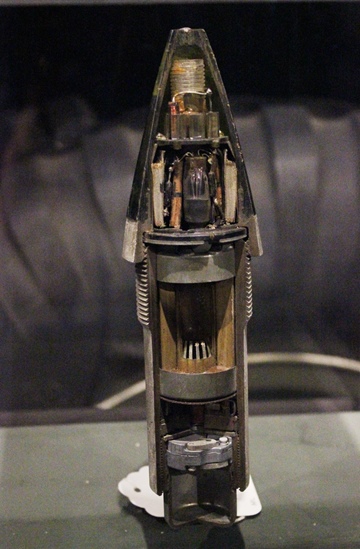
This cut-away of a VT fuze is on display at the National Electronics
Museum in Linthicum, MD. Crosley built 5,205,913 VT proximity
fuzes in thirteen different models similar to this for the U.S. Army,
U.S. Navy, British Army and British Navy. Author's photo added
5-22-2019.
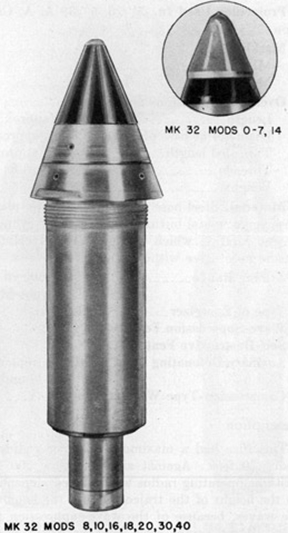
The Mk 32 was the first VT fuze used in the
Navy's 5"/38 dual purpose gun. It was 12 inches long, was 3.3
inches in diameter at its widest point, and weighed 6.81 lbs. It
would detonate within fifty feet of a target. When tested at an
over-water firing range, it would detonate 130 feet above the water.
Note the number of modifications the Mk 32 had over its lifetime and the
change in the shape of the antenna cap. It was a Crosley-built Mk
32 that shot down the drones in navy testing, and a Crosley Mk 32 was
the first VT fuze to shoot down a Japanese aircraft in the Pacific.
Crosley built 1,368,785 Mk 32s. Photo added 5-20-2020
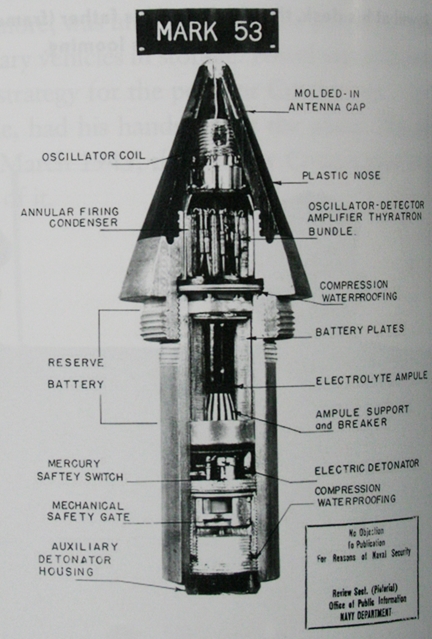
Crosley also built 880,042 Mk 53s for the
U.S. Navy's 5'/38 dual purpose gun. Previous to the Mk 53, Crosley
built the Mk 32 and Mk 40 for the same weapon. Different Mk
numbers were assigned as improvements were made in the design and they
were reduced in size. Crosley built 2,449,259 of all three types
combined for the U.S. Navy in World War Two. These were
instrumental in protecting American sailors and ships from Japanese air
attacks in the Pacific. The Mk 53 was nine inches long, was 3.3 inches
in diameter at its widest point, and weighed 4.89 lbs. Its smaller
size allowed for more explosive to be loaded into the shell.
Photo added 5-20-2020.
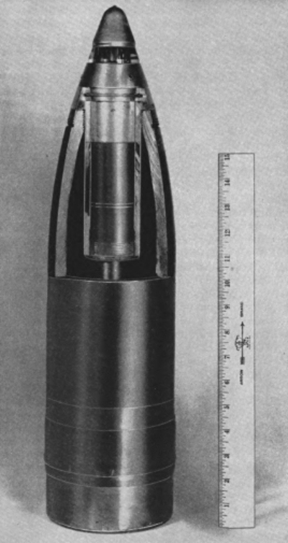
This shows how the VT fuze fit in a shell.
Photo added 5-20-2020.
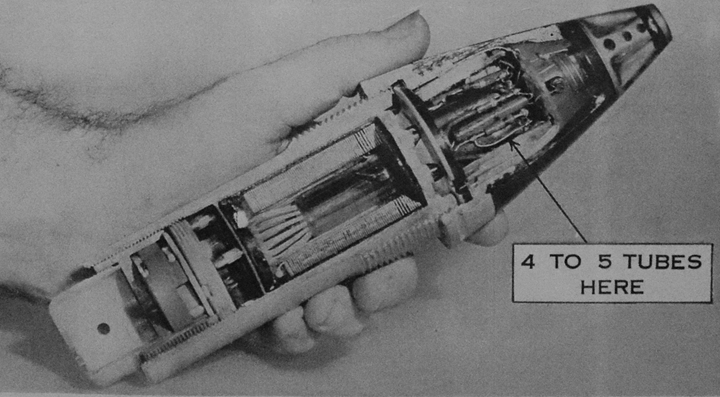
The miniature tubes were held in place by
wax, to protect them from the intense g-forces when being fired from an
anti-aircraft gun. The wax also held them in place from the large rotational
g-forces of the shell. Sylvania produced over 100 million tubes
for the VT program. Photo added 5-20-2020.
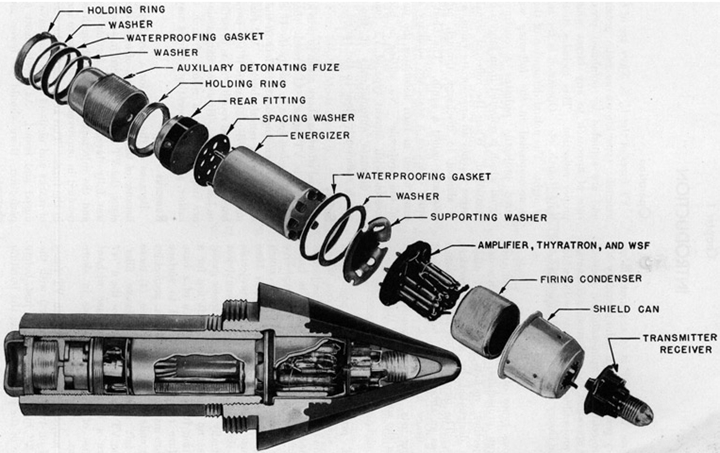
Crosley assembled the VT fuze from
components purchased from U.S. Navy authorized
suppliers. The original cost of a VT fuze in 1942 was $732.
By 1945 it had been reduced to $18. This is $11,514 and $256 in
2020 dollars, respectively. Photo added 5-20-2020.
The Richmond, IN Auto Plant:
From 1939 to 1942, Crosley built 5,757 automobiles in Richmond,
IN. After World War Two, the Richmond facility was sold to
Aviation Corporation, later AVCO, which returned the plant to refrigerator production.
Powel Crosley, Jr. kept the car making operation and moved it to Marion,
IN as Crosley Motors, where it remained in production until 1953,
producing another 83,539 vehicles.
|
Crosley Cars
Accepted by Detroit Ordnance, US Army
The information below comes from "Summary Report of
Acceptances, Tank-Automotive Material, 1940-1945."
Published by Army Services Forces, Office, Chief of
Ordnance-Detroit, Production Division, Requirements and
Progress Branch
January 21, 1946. |
|
Type |
1940 |
1941 |
1942 |
1943 |
1944 |
1945 |
Total |
| Car, 4-Passenger |
1 |
|
|
|
|
|
1 |
This one vehicle was purchased on P.O.
134-MV.
Products built at the Richmond plant for
the war effort included: Components for Walkie-Talkie Radios, IFR
Radio guidance equipment, air supply units for Sperry bombsites (used in
B-24s), air conditioning units, cooking stoves and Martin PBM Mariner bow gun turrets. The gun turret was the largest contract. Crosley had 1,400 employed at the Richmond plant during World War Two.
Crosley World War Two
Military products made at the Richmond, IN auto plant:
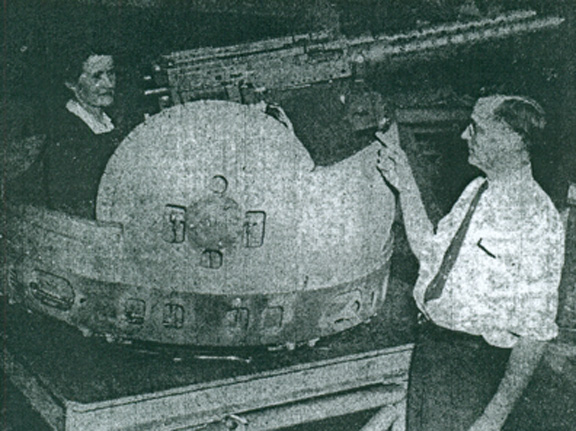
One of the World War Two products in the former Crosley auto plant was
this bow turret for the Martin PBM Mariner. 1,362 PBMs were built.
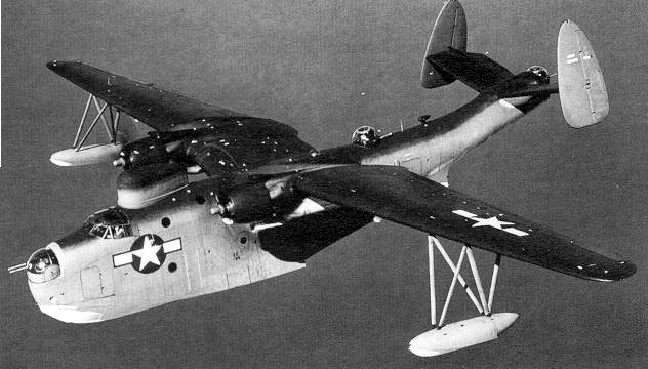
This photo shows the Crosley built bow
turret in the Martin PBM.
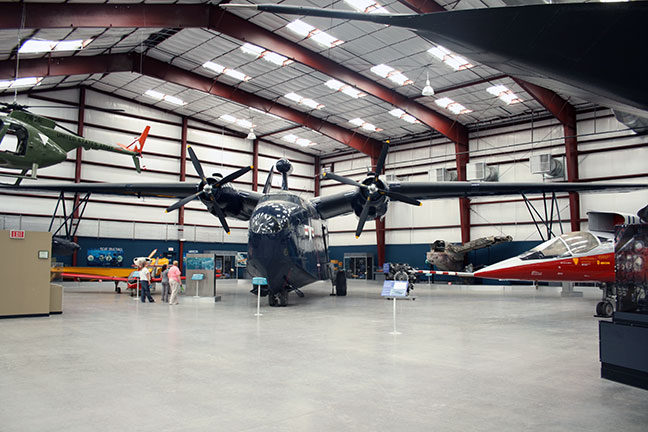
This is a Martin PBM-5A Mariner. It is the
only surviving PBM remaining in the world of the 1,366 built; and is at
the Pima Air and Space Museum in Tucson, AZ. This aircraft
unfortunately does not have any of the turrets on it, as it is a post-World War Two
model.
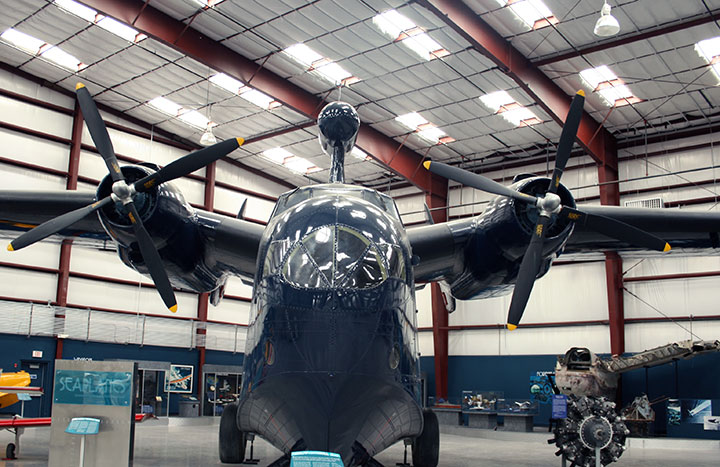
This is where the bow turret would go.
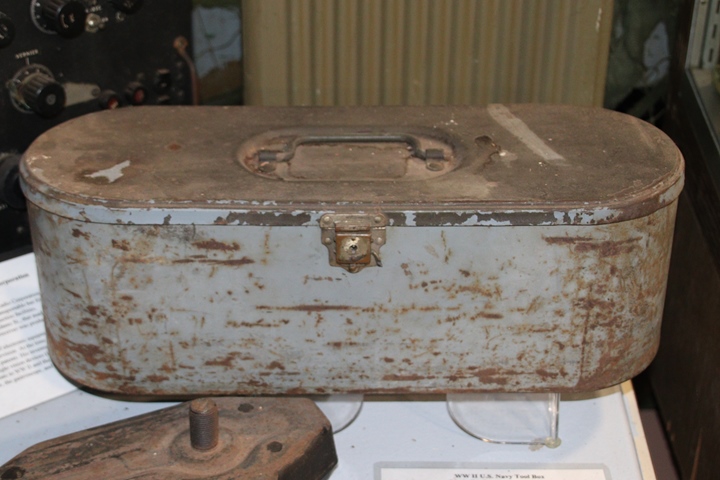
This is an interesting item. Each PBM
Mariner bow turret came with a tool box and tools. This one was
appropriated by a worker in the Richmond plant for his personal use.
Author's photo from the Museum of the Soldier in Portland, IN.
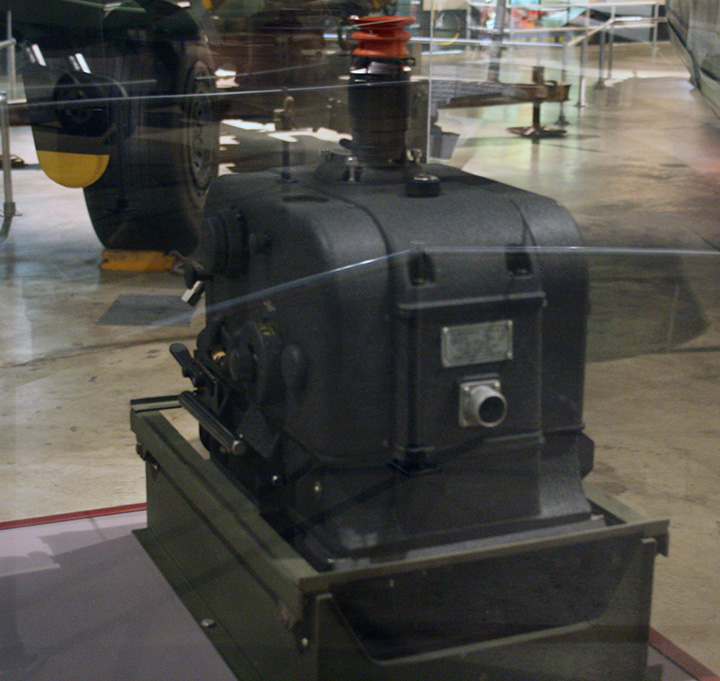
The next two photos show a Sperry S-1
Bombsight for which Crosley made parts in its Richmond, IN Plant.
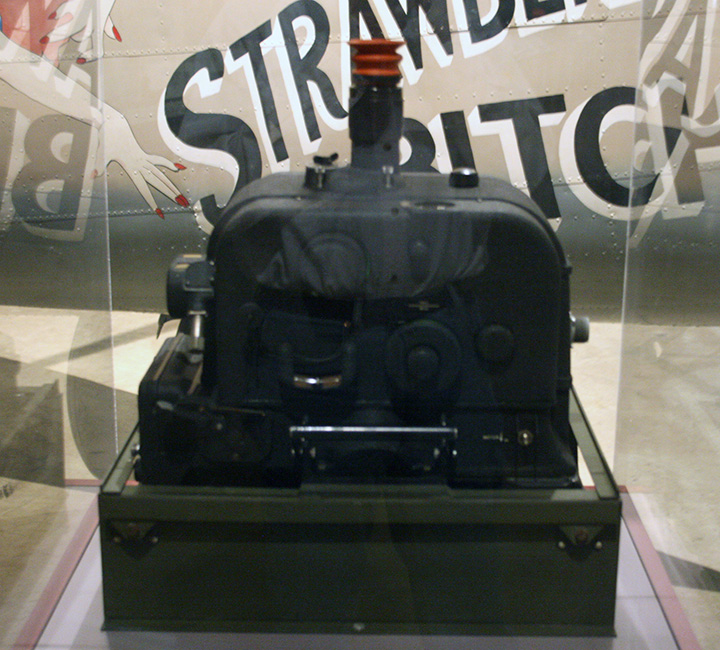
Crosley World War Two Products built in
Cincinnati, OH: 63,972 SCR-284/BC-654 radios, 34 CT-3 Pup extra-light
jeeps, a portion of 85,000 Mark XIV anti-aircraft gun sights for
the U.S. Navy, aircraft bomb releases for the U.S. Army Air Forces,
Signal Corps RM-29-A remote control units, aircraft tracking radar equipment,
gun mounts, briefcase-sized radio direction finders, portable electrical
generators for the U.S. Navy, and 5 SCR-582 coastal radar installations.
-
The SCR-582 was a fixed
coast artillery microwave radar which consisted of 41 individual
units. Crosley received this order from the U.S. Army Signal
Corps in May 1942.
-
Crosley built all of the
63,972 SCR-284 radios during World War Two. The company built
13,585 in 1942, 28,618 in 1943, and 21,769 in 1944.
-
Crosley built an unknown
number of bomb releases. During conversation with Army
procurement officials, Lewis Crosley informed them that Crosley
could build the bomb releases for eight dollars. The Army was
currently being charged $30 a piece. Crosley was awarded the
business.
-
Crosley built a small
portable electric generator for the U.S. Navy that was made out of
18 stamped sheet metal which were brazed together and mated to an
aluminum crankcase. This four-cylinder engine weighed sixty
pounds. Crosley Corporation purchased the commercial rights
from the inventor, and then hired him during the war to work on the
engine. After the war this became the COBRA engine for the
Crosley automobile.
-
Crosley built several
other small experimental vehicles besides the CT-3 for both the U.S.
Army and Navy. These were the Bull, Pup, Crosley Snow Tractor,
and the Crosley Duck. None got beyond the experimental stage
of one unit.
A War Production Board Report
dated 9-30-1943 shows that Crosley was building 305 radios of all types
per day in its Cincinnati plant.
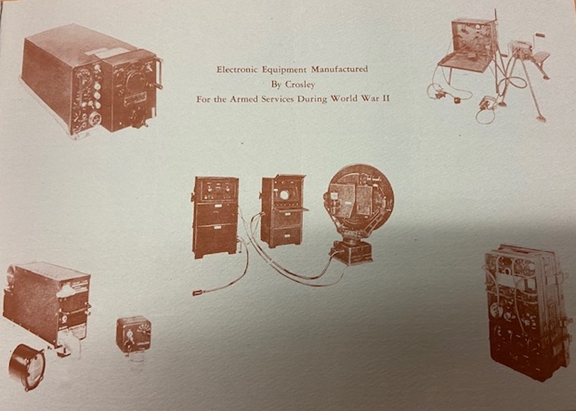
This page is from a post-World War Two
document published by the Crosley Division of AVCO. It shows five
pieces of equipment that the former Crosley Corporation produced during
the war. In the upper right is the SCR-284 radio for the U.S.
Signal Corps. The middle photo of a radar unit is most likely the
SCR-282. Image added 6-13-2020.
Mark XIV Navy Gun Sight for 20mm and 40mm
Anti-Aircraft Guns: The Mark XIV gun sight was designed by the
Massachusetts Institute of Technology at the request of Sperry Gyroscope
to assist Navy gunners to track high speed aircraft. Sperry became
the main contractor for the Mark XIV and Crosley built the gun sight
under contract. A total of 85,000 were built by all suppliers.
The War Production Board Report dated 9-30-1943
also
shows that Crosley was building 50 units per day. Initial
production began in February 1942 and obtained the rate as of May 1943.
Fifty gun sights per day is 1,500 per month. For the eight
remaining months Crosley built 12,000 Mark XIV gun sights. If this
rate continued to the end of World War Two, Crosley had the potential to
build 42,000 Mark XIV gun sights for the U.S. Navy. This was half
of the total built.
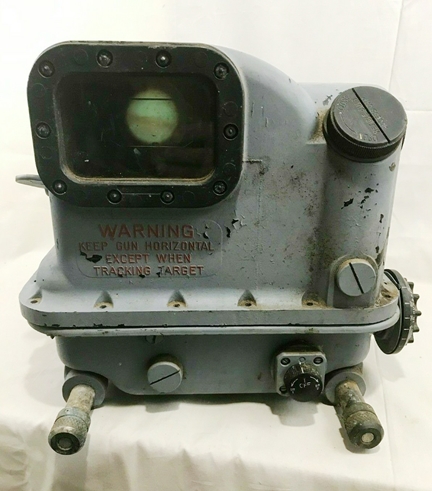
This is a Crosley-built Mark XIV Mod. 8 for
use on 40mm Bofors anti-aircraft guns. This is the side that faces
the gunner.
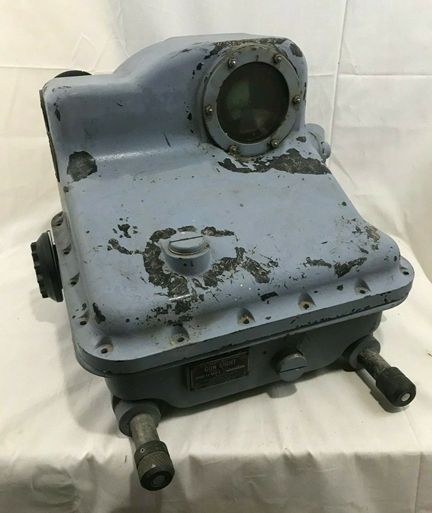
This is he side facing the enemy aircraft.
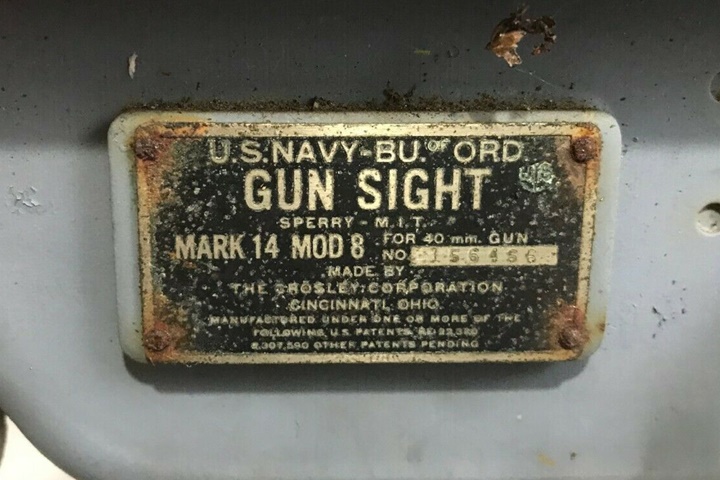
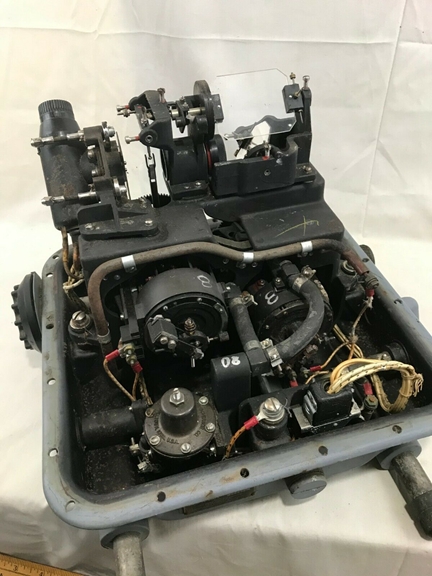
The weapon has been opened up and is viewed
from the target side unit. In the upper right-hand corner is the
where the image comes into the unit and is then displayed on the glass
for the gunner.
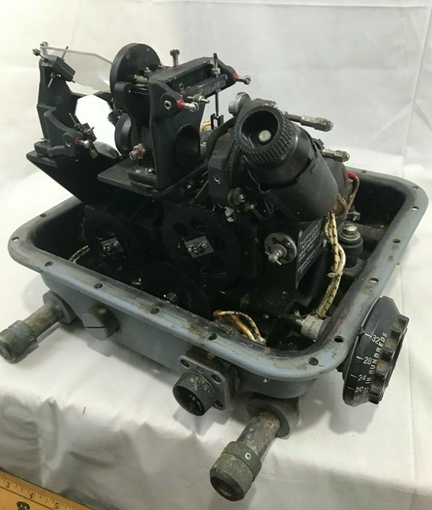
This view is form the gunner's side of the
sight. This was a very sophisticated piece of equipment for the
era.
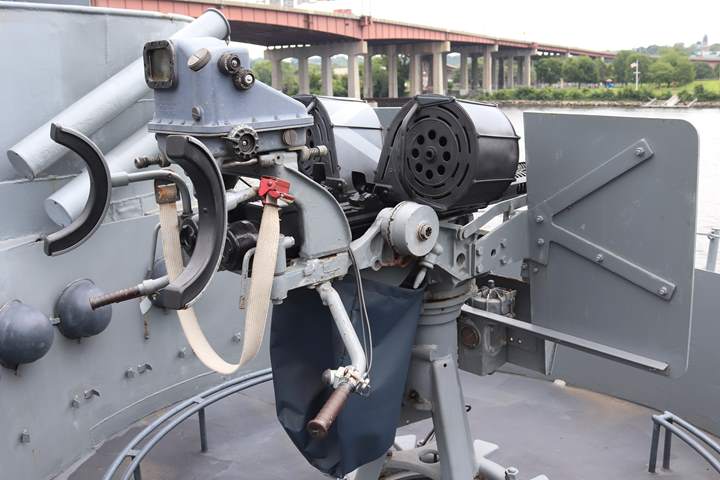
The Crosley-built Mark XIV gun sight mounted
on 20mm Oerlikon anti-air guns. For those enemy aircraft that were
lucky enough to penetrate the Crosley V-T proximity fuzed five-inch
anti-aircraft shells, Crosley-produced Mark XIV gun sights aided the
short-range tracking and aiming of fast moving aircraft approaching the
ship. All of the 20mm anti-aircraft guns on the USS Slater, DE766
in Albany, NY have Mark XIV gun sights. This is the only World War
Two ship I have visited that have these sights mounted on the guns.
The USS Slater is the most well restored World War Two ship on display
in the United States. Author's photo added 6-13-2020.
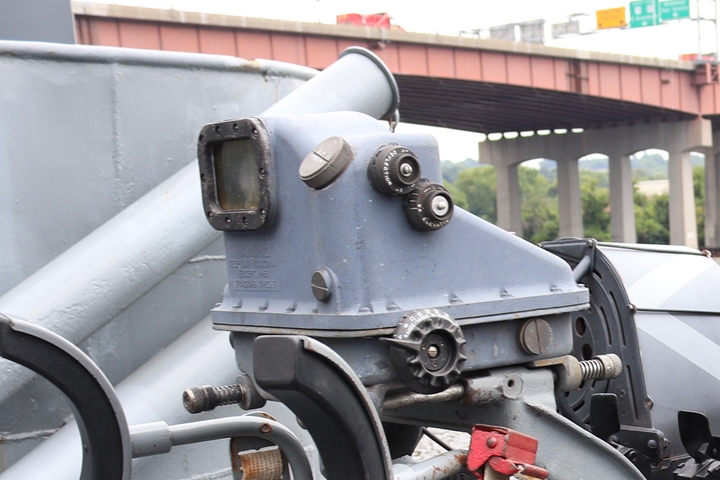
Author's photo added 6-13-2020.
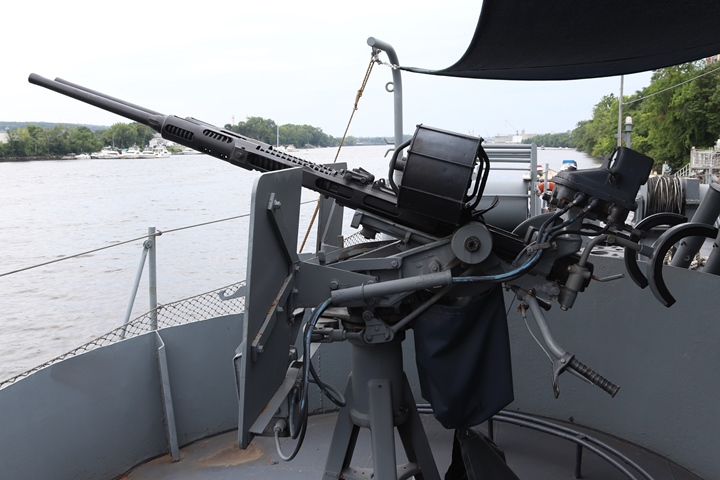
Author's photo added 6-13-2020.
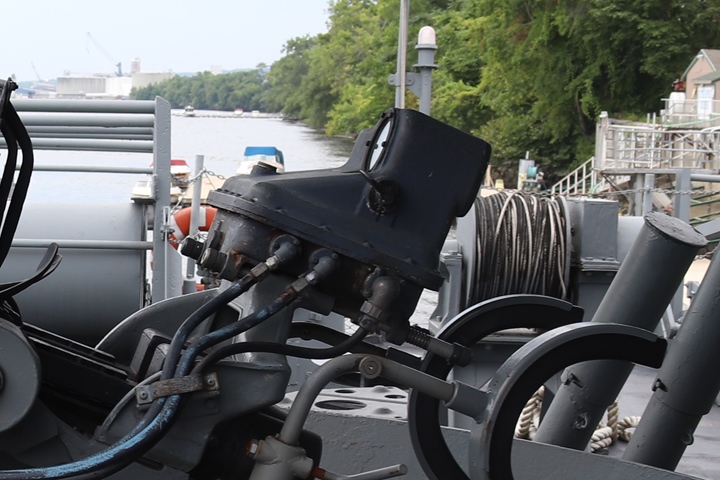
Author's photo added 6-13-2020.
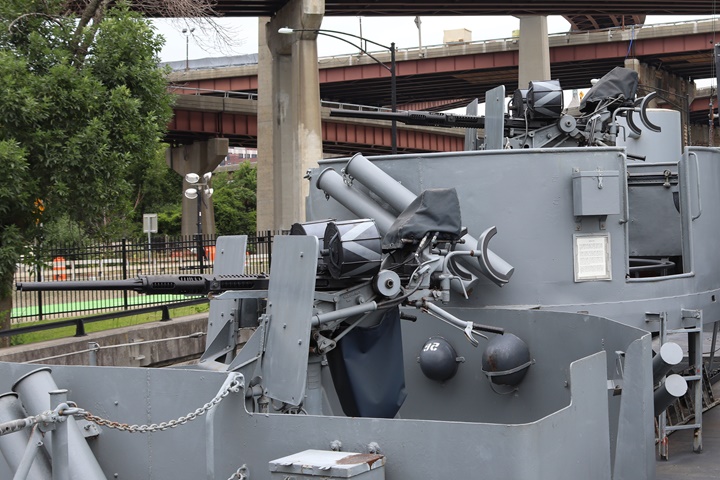
These two 20mm twin mounts have Mark XIV gun
sight under a weather proof covering. Author's photo added
6-13-2020.
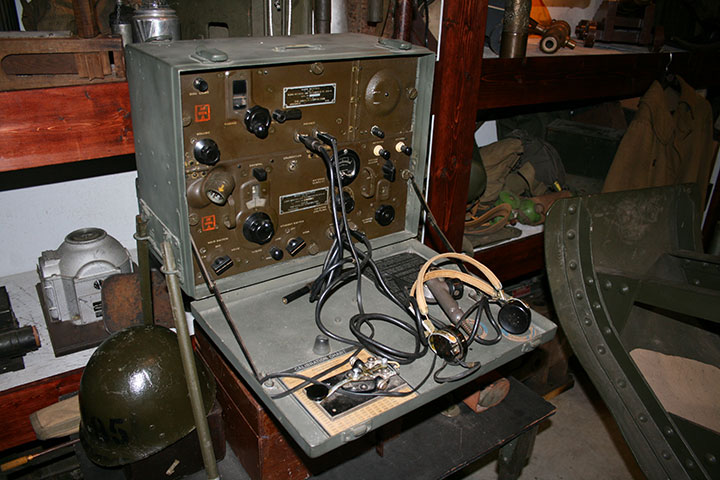
Crosley built 150,000 of these BC 654 radios
during World War Two. Some of the parts may have been produced at
Richmond, along with other radio components made there. This example was on
display at the former Ropkey Armor Museum in Crawfordsville, IN.
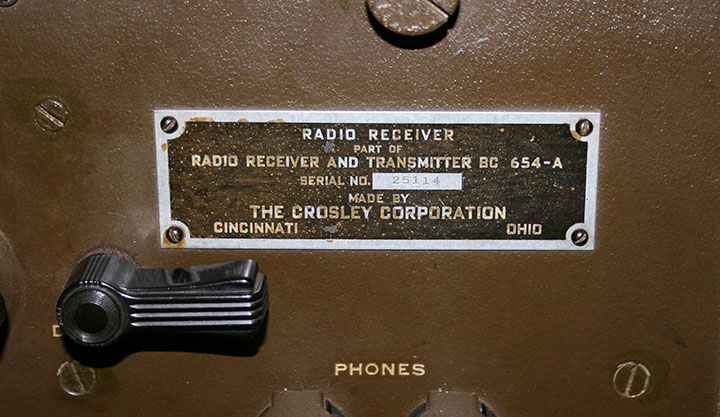
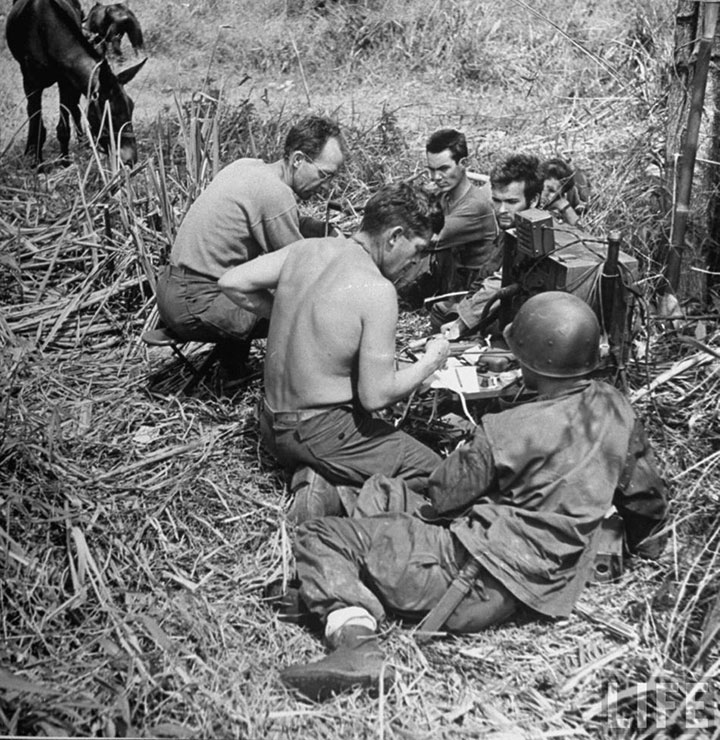
High tech radio with low tech mule to
transport it with Merrill's Marauders during World War Two.
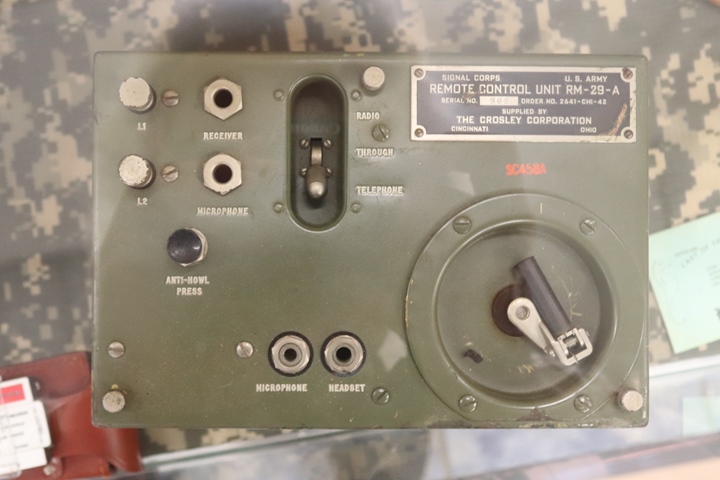
Crosley built RM-29-A Remote Control Units
for the U.S. Army Signal Corps. This unit allowed remote
communication from a field phone at a front line position to other
military units via radio transmission. The RM-29-A was the
interface between the phone switchboard and the radio set. The
unit could also be used as a field phone. Author's photo from the
Museum of Military History in Kissimmee, FL.
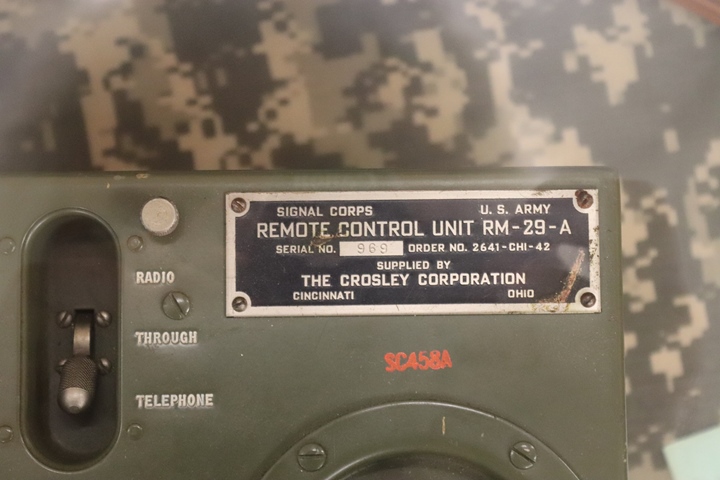
It is Serial Number 969. Author's
photo.
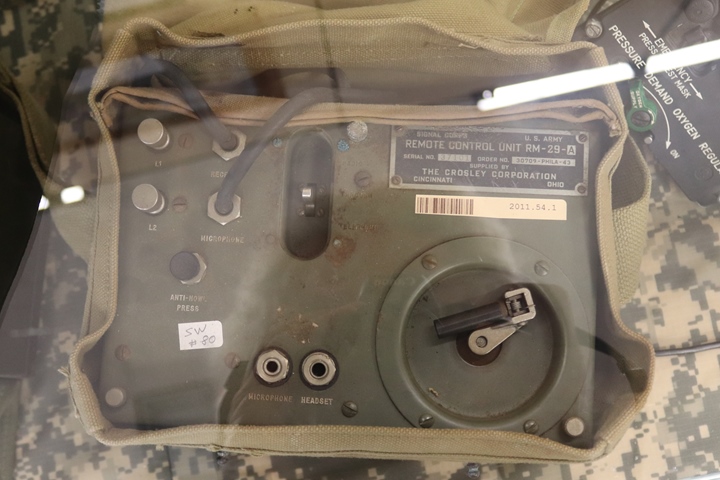
The Museum of Military History has two
RM-29-A's on display. This one is in its carrying bag and is
Serial Number 37101. Author's photo.
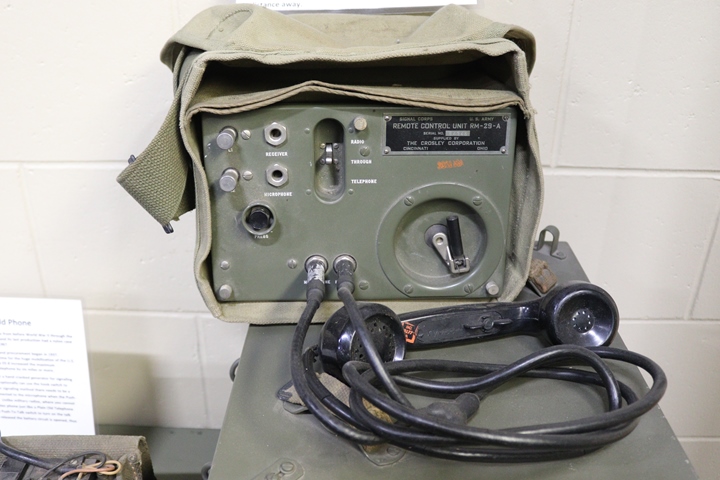
This Crosley-built RM-29A is on display at
the Military Veterans Museum in Oshkosh, WI and is serial number 64345.
Author's photo.
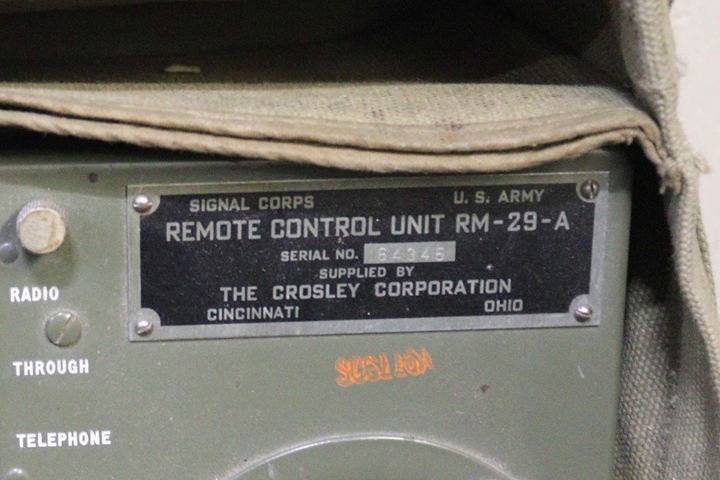
The Crosley Pup CT-3 Truck, 1/4-ton 4x4,
Extra Light: There were 37 CT-3s built by Crosley during World
War Two. Serial Number 137 is at the Sam Werner Military Museum in
Monteagle, TN. Serial number 133 is located at the National Museum
of the 8th Air Force in Pooler, GA and serial number 134 is at the
Airborne and Special Operations Museum in Fayetteville, NC. There
are photos of those three below. These are three of seven that are
still reported to exist.
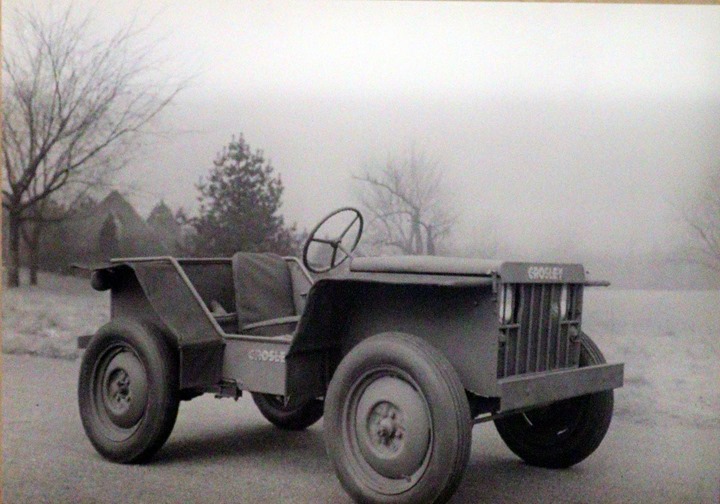
A Crosley CT-3 at an Army camp. Note
the pyramid tents in the background. This may be the first one, as
it does not have the all-terrain type tires on it. Photo added
5-22-2019.
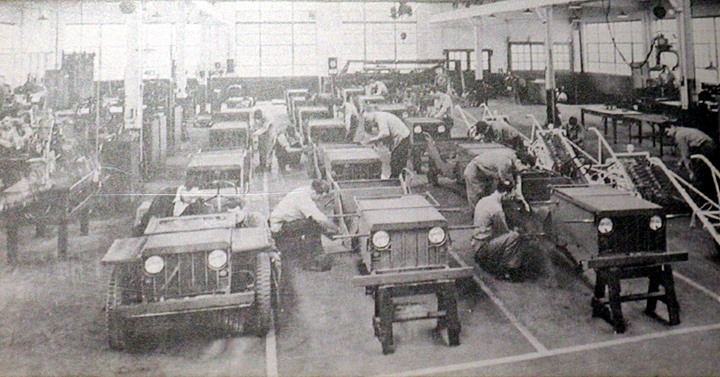
The building of the CT-3 by Crosley was a
job shop operation. There are 16 of them in various states of
production in this photo. Photo added 5-22-2019.
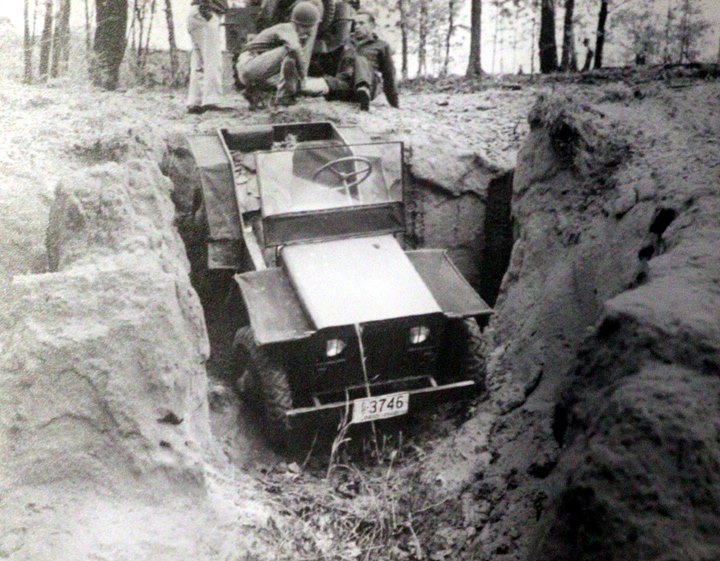
It looks like a medic is working on the leg
of the driver who drove this CT-3 into the hole. Photo added
5-22-2019.
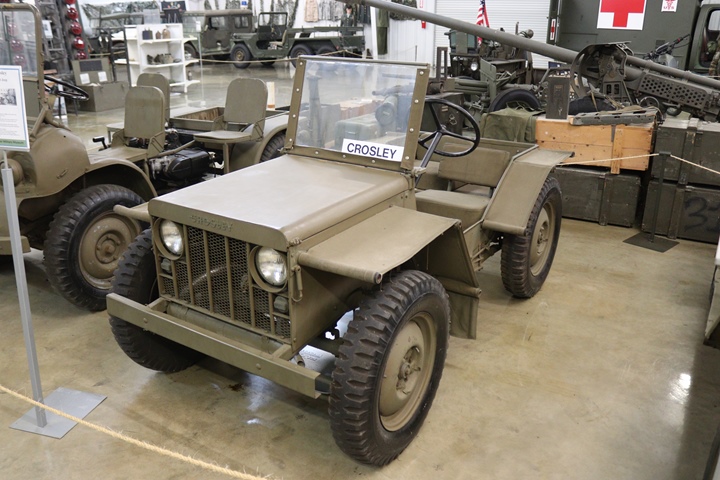
This is serial number 137. It is the
last CT-3 Pup of the 37 built. The serial numbers ran from
101-137 inclusive. It is at the Sam Werner Military Museum in Monteagle, TN as part of a display of four extra-light jeeps that were
built for the U.S. Army. Note the fenders are made of canvas.
Author's photo added 5-20-2020.
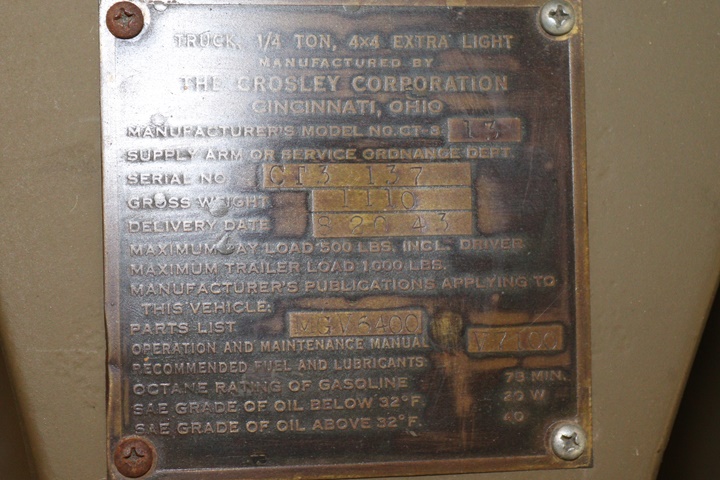
CT-3 serial number 137 was built on
8-20-1943.
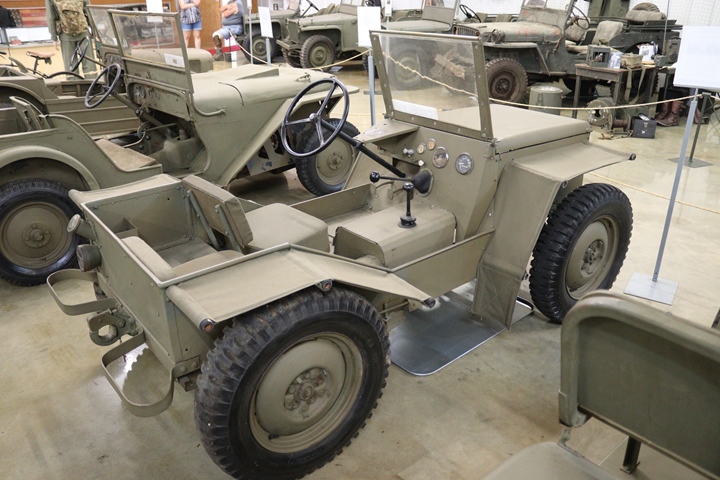
Author's photo added 5-20-2020.
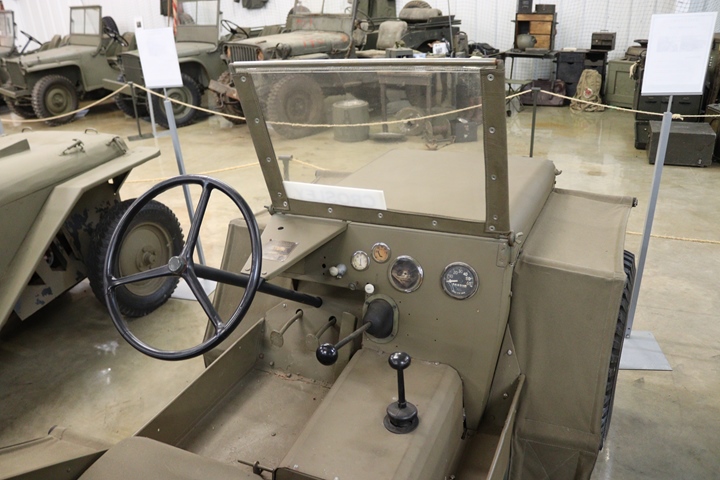
Author's photo added 5-20-2020.
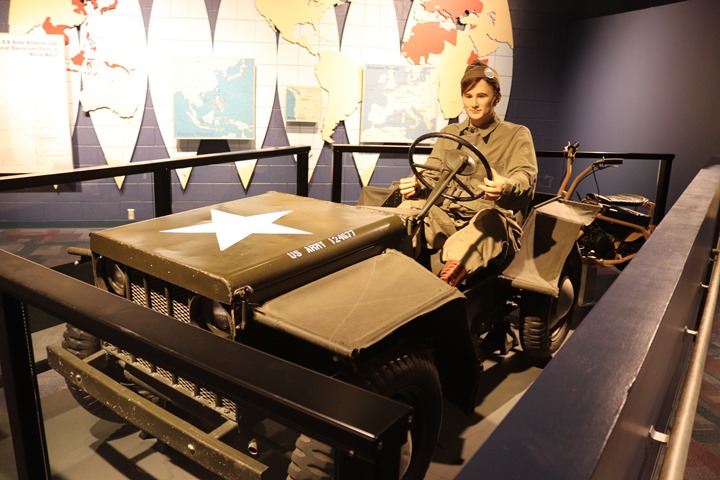
This is CT-3 serial number 134, dated
8-13-1943. It can be seen at the Airborne and Special Operations Museum
in Fayetteville, NC. Author's photo added 5-22-2019.
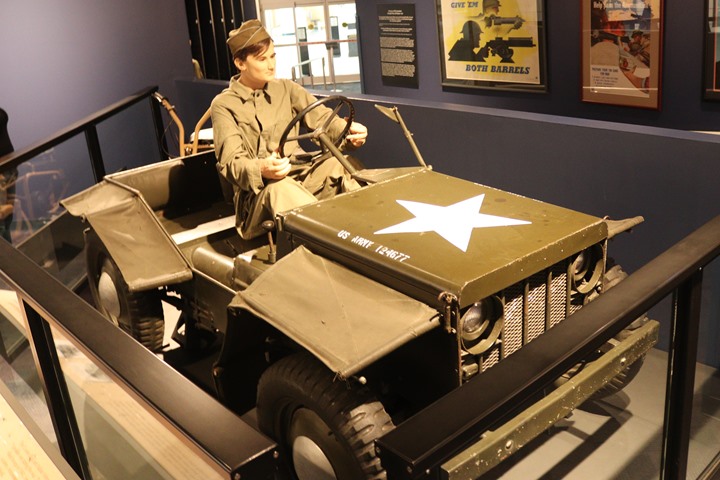
Author's photo added 5-22-2019.
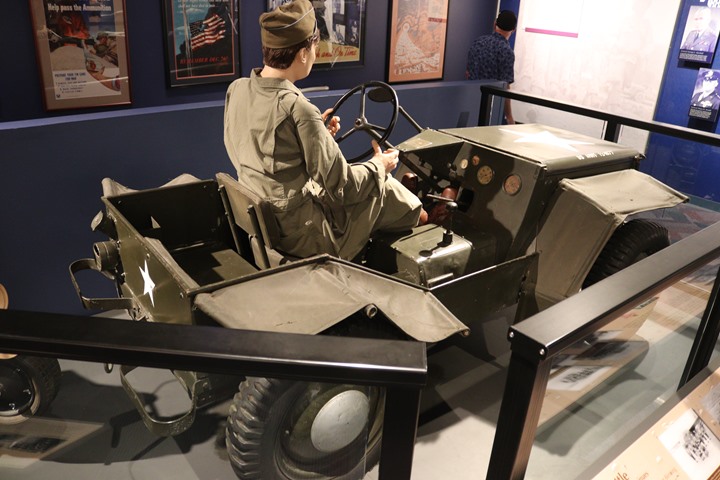
Author's photo added 5-22-2019.
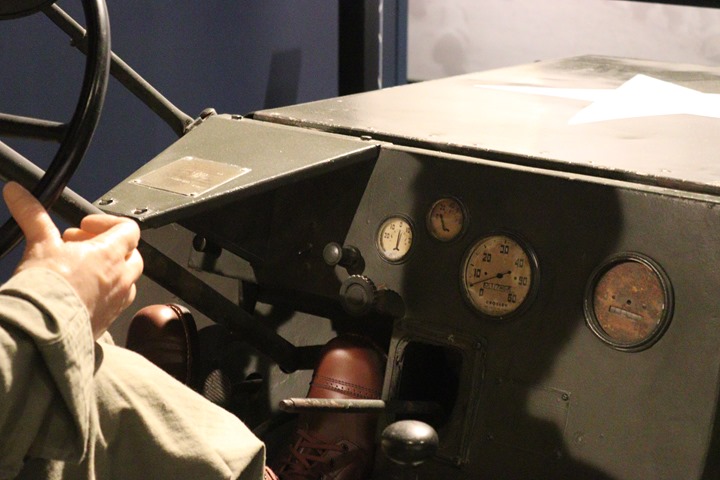
Author's photo added 5-22-2019.
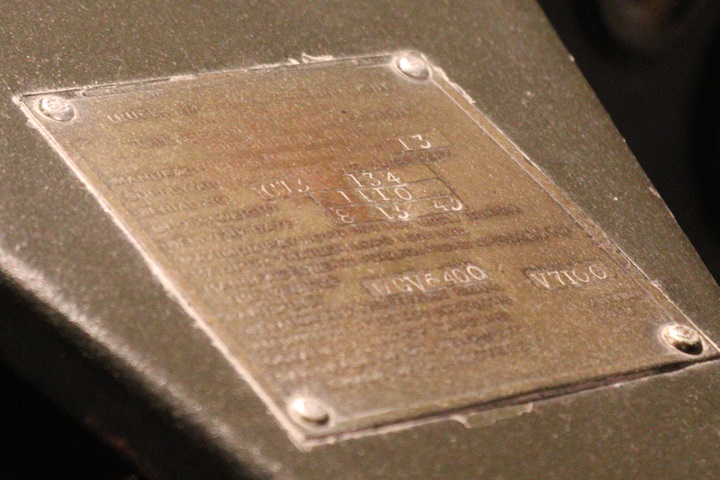
The data plate on this CT-3 shows serial
number 134, with a delivery date of 8-13-1943. Author's photo
added 5-22-2019.
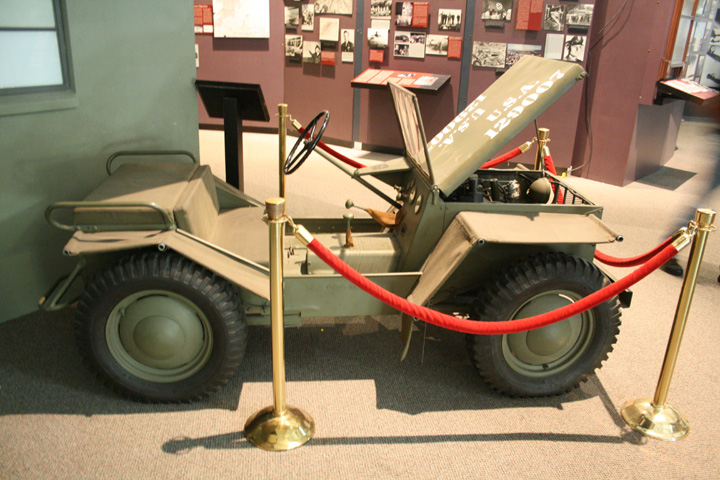
This CT-3 is located at the National Museum
of the 8th Air Force in Pooler, GA. It is serial number 133,
dated, 8-16-1943. This is three days later than serial number 134
above.
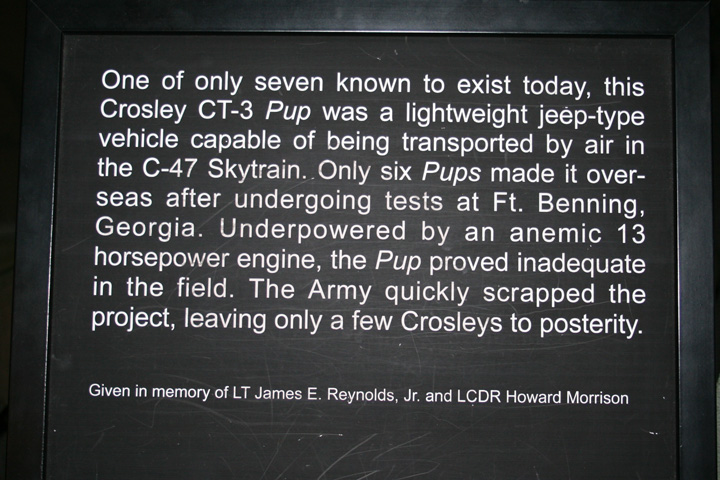
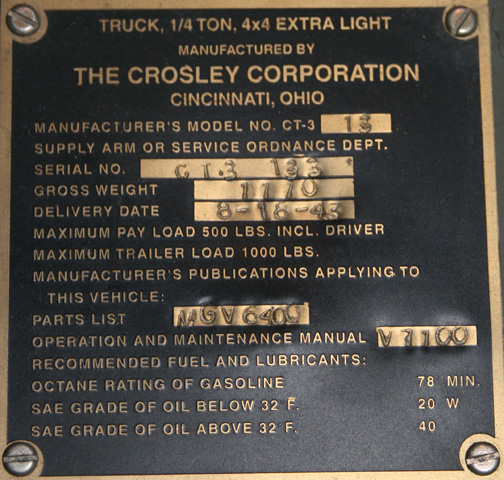
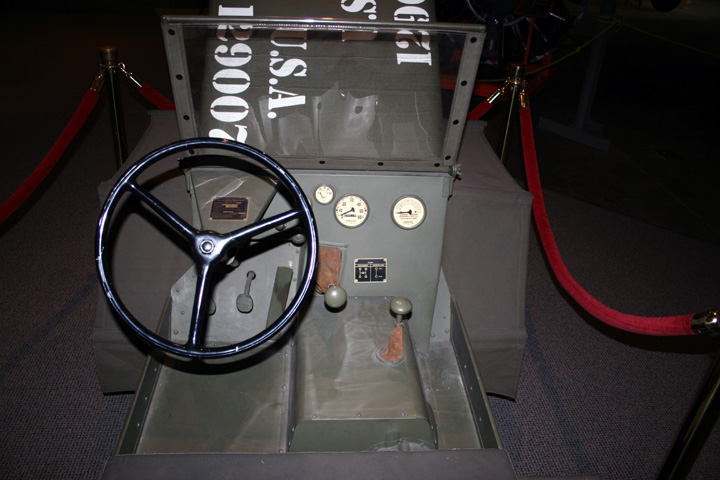
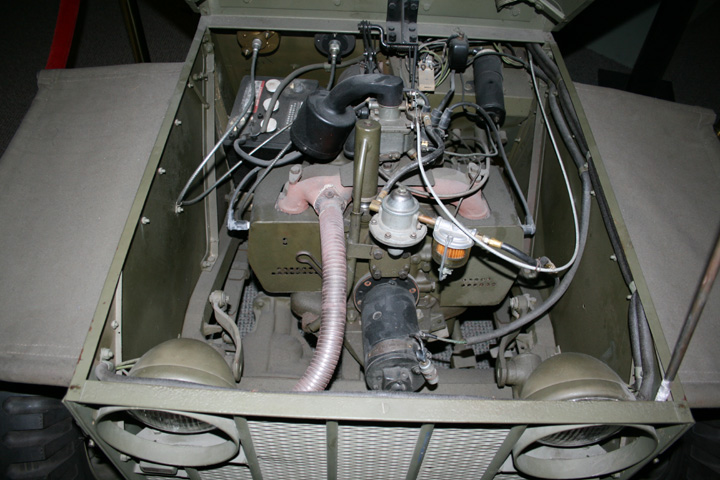
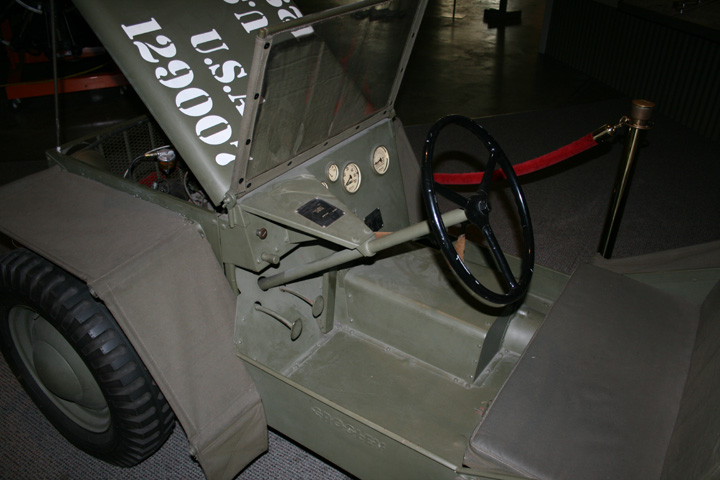
Other World War Two Plants: The War
Production Board Report dated 9-30-1943 shows that Crosley was building
shortwave broadcast transmitters in Butler County, OH. No quantity
was given.
Another facility is listed for Mason, OH with
only "Communication" as the description. This may have been a
radio broadcast station.
The Crosley Division of AVCO:
Below are several pages from "The Crosley Story" that was giving to new
hires as an orientation on what was expected of them when going to work
for the Crosley Division of AVCO. The pages below show that AVCO
purchased several new plants to expand production of the refrigerators
and electronic equipment. The document is circa early 1950s.
Document courtesy of the Cincinnati Public Library.
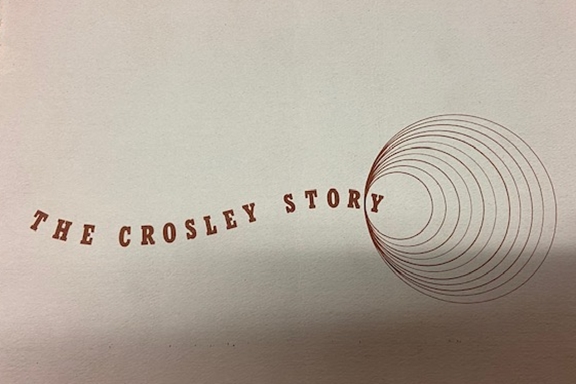
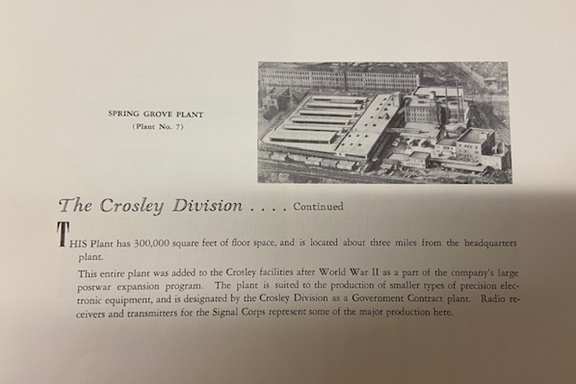
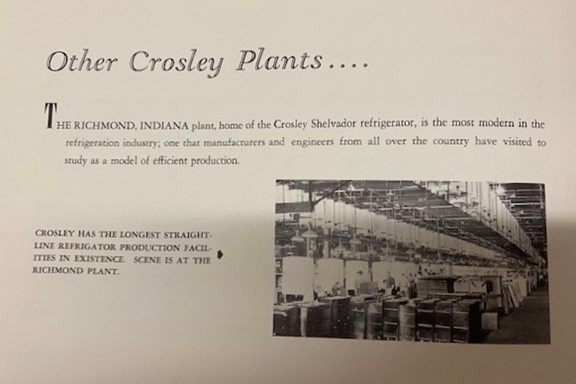
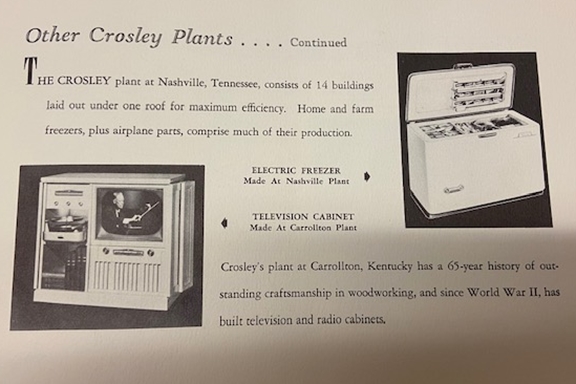

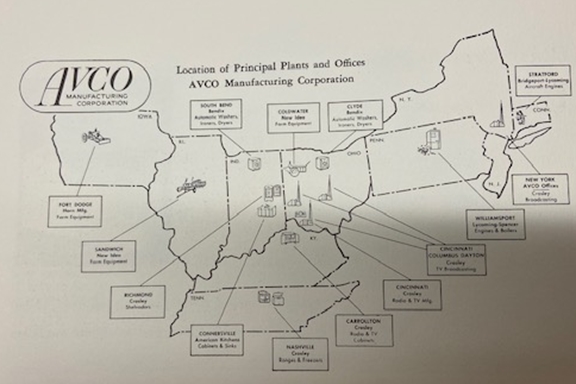
|























































